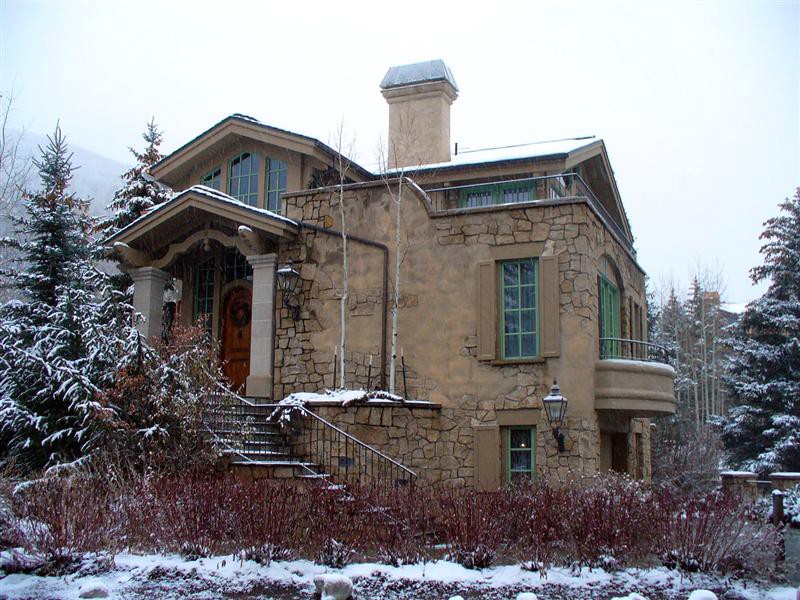You are wearing your clothes, a fuzzy robe, socks, furry slippers, and are tucked into a blanket. The tiny hair follicles on your arms and neck are standing at attention while a chill chases itself through your entire body. You shiver, curl up as tight as possible and start looking around for a blanket. It’s cold. Too cold.
Alternatively, it is 90 degrees plus outside. It seems as if the thermometer might pop right off the wall. Sweat is dripping down the back of your legs, the fan is wheezing from how hard it is working, and there’s no hope in sight for any amount of relief.
When your heat or air conditioning fails, or isn’t available, you can use the techniques our grandparents used to heat or cool your home and provide some relief. Here are some tips and tricks that might help you navigate our sometimes challenging weather patterns.
All Homes
The easiest way to cool your home, whether it is a stand-alone structure, a condo, townhouse, or an apartment, is to close it up during the day. This means closing all windows before dawn, as well as any shading devices. Close miniblinds and curtains if you have them. If there are only blinds, consider hanging a dark sheet or a lightweight blanket over each window during the day. The best method for home cooling of this type is to close your exterior shutters if you have them, which will prevent the sun from entering the home at all. This technique can make your home up to 15 degrees cooler inside! If you have to be at home during the day, use this technique on the south and west sides of the house and keep your activities in the rooms on the north and east. The north side is far more shaded and will be cooler during the entire day. Use the eastern rooms — with shades open is fine — only after noon, if possible. After the sun has gone down, open the lower sash of north-side windows and the upper sash of the windows on either the south or the leeward side (the direction the wind is moving to) of the house.
The easiest way to heat the home in winter is to do exactly the opposite — open the house up wide on the south and west sides in the morning, allow the sun to flow in all day, and as soon as the sun starts to go down, close all the blinds and drapes on every window. This will help keep the heat in over the night. Use the south and west rooms during the day and through the night if you can, to stay warmer naturally. Also, be sure that all windows are closed and LOCKED — locking helps make sure that air infiltration is minimized.
If you have a basement, the pressure difference between a closed-up home and the outside may drive humidity into the lower parts of the house, where it will tend to collect and grow algae and molds. If during the warmer times of the year you use the closed-house technique described above, try to open the house up at night to allow this moisture to dissipate and provide a cool breeze. Close windows as soon as possible in the mornings, preferably before dawn.
Another effective technique for naturally cooling your home is to plant two to three deciduous trees (per 1000 square feet of floor area) on the south and west sides of your home. Plant them at least 10 feet away from the house to protect the foundation and also dissipate the humidity around the home. Start with trees a minimum of 10 feet tall. This will provide shade and cooling of up to four degrees on the side of the house. Deciduous trees will lose their leaves in fall, and therefore allow the sun to heat your home during the winter. Fruit trees are a great option in these locations too — they love the heat and provide a source of delicious homegrown food, and an excuse to share! Planting trees also minimizes the impact of wind on your home, which will protect it from deterioration as well as cool the wind before it reaches you. If a protected oasis is your desire, it is easy to also plant an aspen grove on the northeast side of your home, where the cool damp naturally occurs. This will humidify the air around the home, providing a degree of relief as well.
Getting back to dealing with the wind during warm times of the year, if you have casement windows, which open vertically, you can use those to capture the wind in the evenings. Just open those that open toward the wind on the windward side (where the wind is coming from) and also those on the leeward side (where the wind is going to), if they open in the direction the wind is traveling. If they don’t, keep them closed, as they will invite the warmer air in!
Two+ Story Homes
One of the great things about living in a two-story structure is that you can use the extra shade provided on the north side of your home, as well as your basement and stairways, to create a form of natural air movement called stack effect, which can be very effective for air circulation and cooling. This technique works by allowing the coolest air on the north side of the house to move through the house, carrying any heated air with it. To use this technique, simply open the lowest floor’s north windows, and if you have double hung windows, open the bottom sash. If you have a basement with windows, there will be a marked difference in the air movement over a first floor window! Then, open the basement and stairway doors, if there are any, and head upstairs to open the windows on the highest story on the south side of the home, or in the direction the wind is traveling to. If you have double hung windows, open the top sash on the upper floor. You can also open your fireplace damper for a similar effect.
Other Tips
Do you have a south-facing porch that is not covered? Now is the time to start considering adding a roof or canopy to this area. This will cool not only the porch itself but also the walls of your home, making the house up to three degrees cooler, which is great in summer. It unfortunately prevents solar gain in the winter, however. If heating is not an issue but cooling is, this might be a good choice.
Another option for a more permanent solution to home cooling is to add shutters, “eyebrows”, or operable awnings over the windows on the south, east and west sides of the home. These techniques prevent the sun from entering the windows at all, thereby making it much easier to cool the interior. Installing shading devices that are less than two feet deep will allow the winter sun to enter and warm the home when solar gain is most helpful. You can hire an architect or builder with passive solar experience to design shade structures that work perfectly for your home, allowing heat in during winter when it is needed and shedding it is summer when it is not.
Use the exterior areas on the north and east sides of the home for the coolest indoor/outdoor living during summer. Providing shade structures, like a canopy or roofed porch, on the south and west is ideal. Or, alternately, grab a blanket and tuck yourself into a warm spot against the south- or west-facing walls of exterior spaces in the winter.
Install rainwater catchments or rain barrels at your downspouts to use in case of emergency or for watering plants. Then you can boil water for cooking or take a cold rinse if the municipal water or your well is not functioning because of power outage. Just use the water within five days so it is not taken out of the ecosystem.
If you have an attached greenhouse that is open to your home, you might consider installing a wall or patio doors between the main body of the home and the glassed-in area. This can cool the home by up to five degrees and will dehumidify the home exponentially.
One of my biggest pet peeves in any home is to have to turn on a light to use the restroom or get something out of the closet when those spaces have no windows. While it will not help with cooling and heating, if you want to avoid this during the day, consider installing a tube skylight for about $200. If your bathroom doesn’t have one already, a tube skylight can also be used for a vent system in some cases, though this is much more expensive. However, getting humid air out of bathrooms and kitchens does affect how cool the space feels; as water evaporates, it takes energy with it, so the less humid the air, the cooler it will feel.
When it is time to replace your roof, consider a medium-toned roof rather than a dark one. This will allow heat gain in winter but will also prevent an overage of heat gain in summer. A white or metallic silver roof is great in summer, but doesn’t help you at all in naturally gaining heat in winter, so its best to use these is places that don’t get super cold.
A tankless hot water system can be installed for about $600, which can also reduce energy consumption, as it does not require heating of a large (average 40 gallon) container of water for the entire day. Though these systems are highly effective, there is a bit of a tradeoff in the noise they make, so plan to put the system outside the main living space if possible. New Mexico’s mesa hippies have known for years that you can take an old hot water heater painted black, or a long length of black hose, and place it in a sunroom or unobstructed south-facing skylight to have even more hot water for almost no cost.
Architecture was once all about function, and form came later in the process — buildings had to work first, and then they could look pretty. Many homes built since the 1960s depend on mechanical systems to work properly, and the function of the home in times of electrical or gas shortage “wasn’t relevant,” since we’d never ruin out of either. As we see clearly now, a home that depends on mechanical systems to be comfortable is not always good for the user or the environment, and things always break, including our utility systems. Hopefully these old-school techniques will help you to find comfort in a sustainable, livable way.
♥




